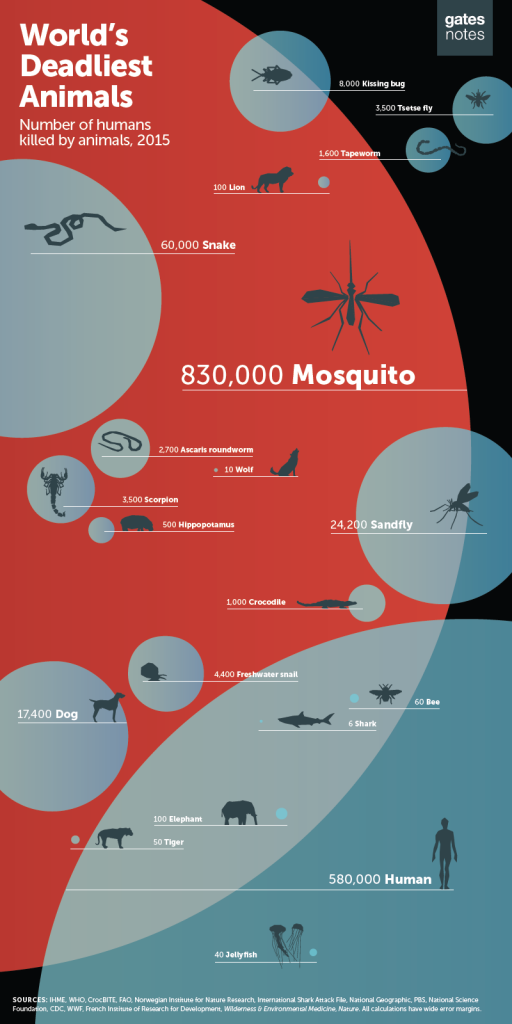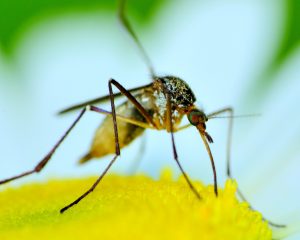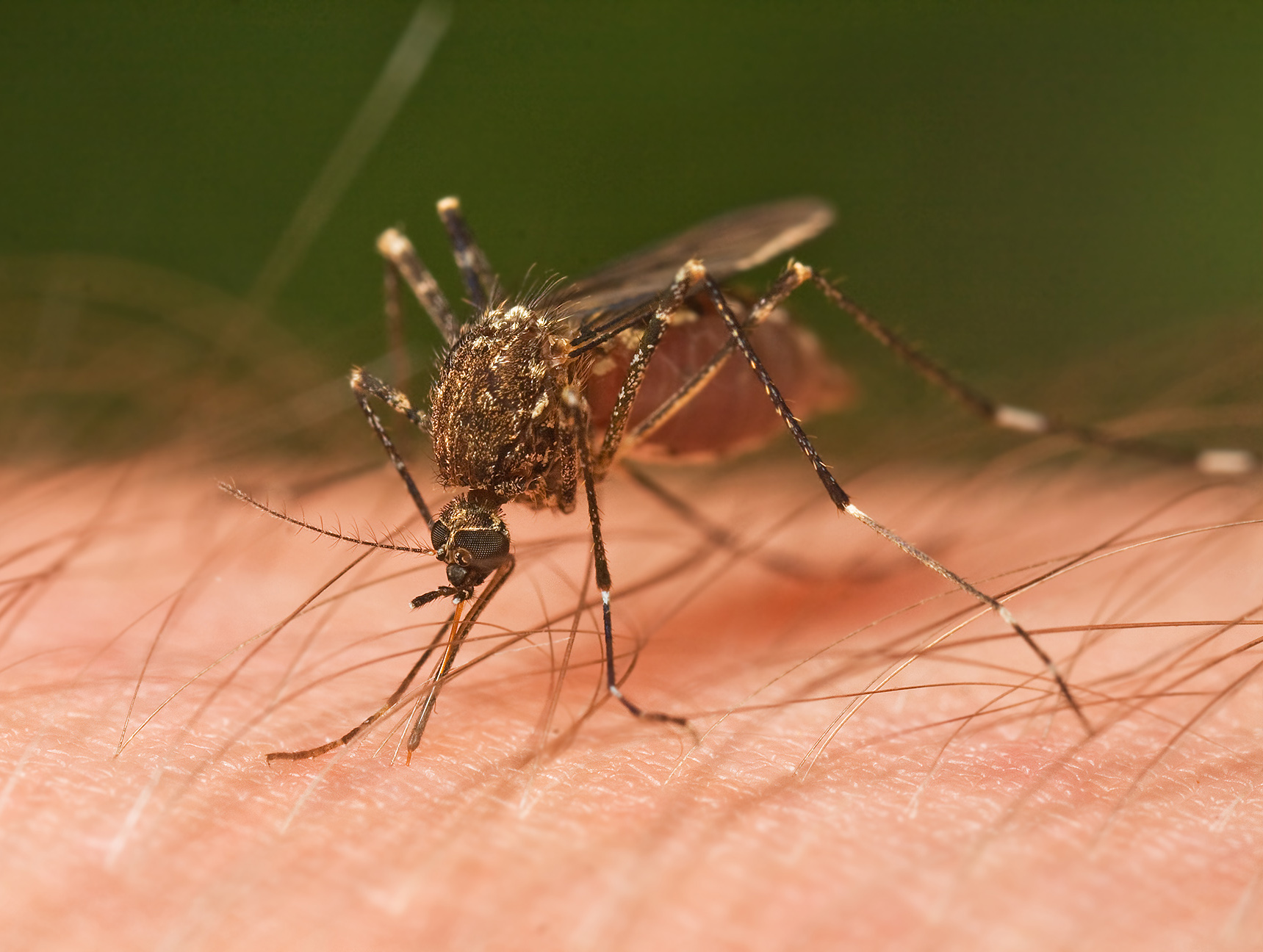Mosquitoes are fascinating insects. So small and fragile, yet so significant in our lives. Mosquitoes are one of the most important animals on earth, if you factor in the money spent on researching and controlling them, and the impact that can have on nearly every continent’s population. Centuries have spent spent trying to control or eradicate them and treat the diseases caused by them. Major organizations like the Gates Foundation have made mosquitoes part of their mission. And if you go into any convenience store during the summer, you will see aisles full of mosquito sprays and repellents.
From being on earth for millions of years to being the number one cause of human deaths around the world, today we look at interesting facts about this little insect that you will find in almost every part of the world.
Mosquitoes have been around forever

According to the available evidence and human research, the oldest known mosquito existed about 79 million years ago while some researchers claim that a sister species of more primitive feature roamed the earth as far 100 million years from today. The insects have evolved, reproduced and caused problems for us, humans, ever since. Mosquitoes are members of a family belonging to nematocerid flies and have more than 3500 species up to date. They live on all of the earth’s continents except for Antarctica.
The species, however, are distributed all around the world with exception of Antarctica and some lucky nations with not so mosquito-friendly climate conditions. These fortunate places include the country of Iceland and the French Polynesia, which have little to no traces of mosquitoes moving about, being a nuisance to peaceful human beings. The factor that determines this “natural selection” is the fact that mosquitoes prefer warm tropical conditions, the reason why you’ll find tons of these bloodsuckers in the humid towns of Brazil, India and several other countries with similar environmental features.
When you realize how persistent mosquitoes have been over the ages, you realize exactly what you are up against.
Mosquitoes live to breed
It might a surprise to you that these little anthropods can survive for a month or more, and that is the case for female mosquitoes in preferable conditions. Males, on the other hand, only live for a week. But the brief period they do spend on earth is indulged in mating and giving birth more to more mosquitoes! The female would immediately start mating after emerging from its pupa state and then will begin its hunt for a suitable host.
Once it has sucked enough blood, the female would wait for the blood to digest and the eggs to develop before laying them anywhere it could find a sufficient amount of water (that is why we advised targeting water when it comes to yard mosquito control). Once the eggs have been laid, the female would repeat the cycle. A female mosquito is capable of laying as many as 200 eggs at a time, a remarkable figure. Once the eggs hatch, the larvae go through a 4-stage process before becoming an adult and carry on with the family tradition of breeding intensively and maintain the mosquito populace.
Mosquitoes are responsible for more human deaths than any other animal
This might make you do a double-take, but yes, mosquitoes kill more people than any other animal. More than rattlesnakes, grizzly bears, sharks, anything. Now that you know how efficiently these bugs reproduce, the horror story only gets scarier when you realize that these insects also are the reason why the majority of the people around the world 
lose their lives. Mosquitoes have been the vector for several diseases that are epidemics in many nations around the world. Some of these include:
- Malaria
- Yellow Fever
- Dengue
- Zika Virus
Many of these diseases have originated in Africa due to the favorable warm weather conditions and the lack of sufficient resources to counter the spread of these diseases and control mosquito populations. Malaria alone has contributed to the deaths of 438,000 people during 2015 according to the World Health Organization (some estimates suggest the real figure may be as high as 800,000). 90% of these deaths occurred in the continent of Africa followed by South-East Asia (7%) and the Eastern Mediterranean Region (2%). Although, vaccines against malaria do exist, lack of proper knowledge regarding the disease and how to control it in third world countries has been a facto leading to such comes death rate caused by malaria alone.
Other inconvenient diseases and virus include the dengue and the Zika virus, both spread by the same mosquito specie i.e. Aedes Aegypti . While mortality rates for both these viruses come nowhere near to that of malaria, they can nevertheless lead to severe complications and death if left untreated. That is why it is so important to control mosquitoes in your home, and wear repellents and clothing to repel them.
Mosquitoes have been a part of several major historical events
Now, time for some fun facts and theories. Mosquitoes spare no one when it comes to biting and infecting with diseases. The same was the case for the Roman Empire. While historical evidence shows that malaria existed long before the Roman Empire reached its peak, an epidemic spread around the fifth century A.D when a deadly strain of malaria made its way into different cities. Although malaria was not the sole reason behind the fall of the empire, it surely opened the gateway for many problems to come. It tends to be such a significant event in the history of the Roman Empire that the whole situation is labeled as the “Roman Fever”.
Additionally, the legendary conqueror, Alexander the Great was popular being one of the most feared conquerors to have set foot on the planet. And though he had never lost a battle during his military campaigns, some researchers claim that he might have fallen prey to a single mosquito carrying the West Nile Encephalitis.
More recently, it is believed that mosquitoes played a role in the Civil War, affecting Confederate troops in high numbers because they were based in the Southeast, where they carried mosquito-borne illnesses against a depleted army who had little defense a
Mosquitoes’ existence has ‘some’ purpose
Mosquitoes, like several other life forms, are part of a complex food web. Many of the earth’s creatures eat mosquitoes.
Numerous fish love to feed on mosquito larvae, which are aquatic, and plenty of birds and spiders and other insects have been observed feeding on the adults. Dragonflies and damselflies love mosquitoes too as they are even used for controlling mosquito populations in places where there is a mosquito problem. Frogs eat adult mosquitoes, and tadpoles eat the larvae.
On a limited basis, some species of mosquitoes pollinate followers. This is mainly done by the males who are looking for protein but tend not to bite humans. In such environments, the benefit of having mosquitoes around is stronger.

The animals who eat mosquitoes and their larvae often do so in broad environments, where they are also targeting other creatures as well. Mosquitoes are not a huge part of these creatures’ diets, however, not even for the mosquito fish (Gambusiaaffinis) or the purple martin (Prognesubis), both of which are used as mosquito control. The only ecosystem where mosquitoes play a significant role is the arctic tundra, where migratory birds depend on them as one of their primary sources of diet. Additionally, from a very grim perspective and some may even call it evil, mosquitoes have also kept the human population in control.
It is safe to say that mosquitoes do not play that big of a role when it come to specific food chains but they are here to exist, and it is always valuable information to be aware their “usefulness” in the modern world. Scientists have argued on how a complete eradication of mosquitoes would not harm the earth’s natural order but no can be sure about Mother Nature that has several surprises up her sleeves. As with everything in nature, there is always a little more than meets the eye to the natural order of things, and the food chain.
Some Mosquitos are More Dangerous Than Others
Not every mosquito can harm you. Some are more dangerous than others.
The Aedes aegypti mosquito is one of the most dangerous species, as it can transmit dengue, Zika, chikungunya, and yellow fever. This mosquito species is native to Africa but has spread to tropical and subtropical regions around the world, including South America, Central America, and parts of Asia. Aedes aegypti mosquitoes are distinguished by their black and white striped legs and body. They are known to be aggressive daytime biters, preferring to feed on humans over other animals. Aedes aegypti females lay their eggs in containers of water, including flower vases, buckets, and discarded tires. These eggs can survive for months in dry conditions, making it easier for the species to spread to new areas. To reduce the risk of infection from Aedes aegypti mosquitoes, it is important to eliminate standing water and use insect repellent.
The Anopheles is another very harmful mosquito. It is the one that carries Malaria. Imagine that, with so many types of mosquitoes, one is responsible for all of those Malaria illnesses.
The Wyeomyia, on the other hand, carries no diseases. But it can still bite.
Mosquitoes Live for Just a Short Time
The lifespan of a mosquito varies depending on the species. Most mosquitoes only live for a few weeks, during which time they will mate, feed, and lay eggs. However, some mosquito species are able to survive through the winter months and can live up to six months. One such species is the winter mosquito (Culiseta inornata), which is found in parts of North America. Winter mosquitoes are able to survive the cold winter months by hibernating in protected areas, such as tree cavities, under leaf litter, or in basements. When temperatures warm up in the spring, they emerge and begin their life cycle anew. Winter mosquitoes are not known to transmit diseases to humans, but they can be a nuisance in large numbers.
You Probably Notice Mosquitoes More at Dusk and Dawn
Mosquitoes are more active at dawn and dusk, as they prefer to avoid the heat of the day. They are also attracted to artificial light sources, which can make them more active at night. This can be a problem for people who spend time outside during these times of day, as it increases their risk of being bitten. Mosquitoes are able to detect light sources from a distance and will fly towards them. This is why some insect traps use light to attract mosquitoes and other flying insects. Mosquitoes are also attracted to the heat signature of warm-blooded animals, including humans, which helps them to locate their prey in the dark.
Because mosquitoes also dislike strong winds, they tend to be more active around dusk and dawn, which on many days is the calmest time of the day due to weather patterns.
Mosquitoes Fly Slowly
Mosquitoes are capable of flying up to 1.5 miles per hour, which is slower than most other flying insects. That is why you can often see them coming, where as other insects are harder to spot in flight. Compare the mosquito at 1.5 miles per hour to a Dragonfly at over 30 mph! It is not wonder mosquitoes are prey for so many larger insects and bats.
However, a mosquito’s flight is very agile, allowing them to hover, fly backwards, and make sudden turns. Mosquitoes are able to change the angle of their wings very quickly, which allows them to change direction rapidly. They are also able to adjust the frequency of their wing beats depending on the speed and direction of the wind, which helps them to maintain their course.
Mosquitoes are able to fly in a wide range of conditions, from calm and still air to strong winds and turbulent air currents. This makes them well adapted to a variety of environments, from forests and wetlands to urban areas.






